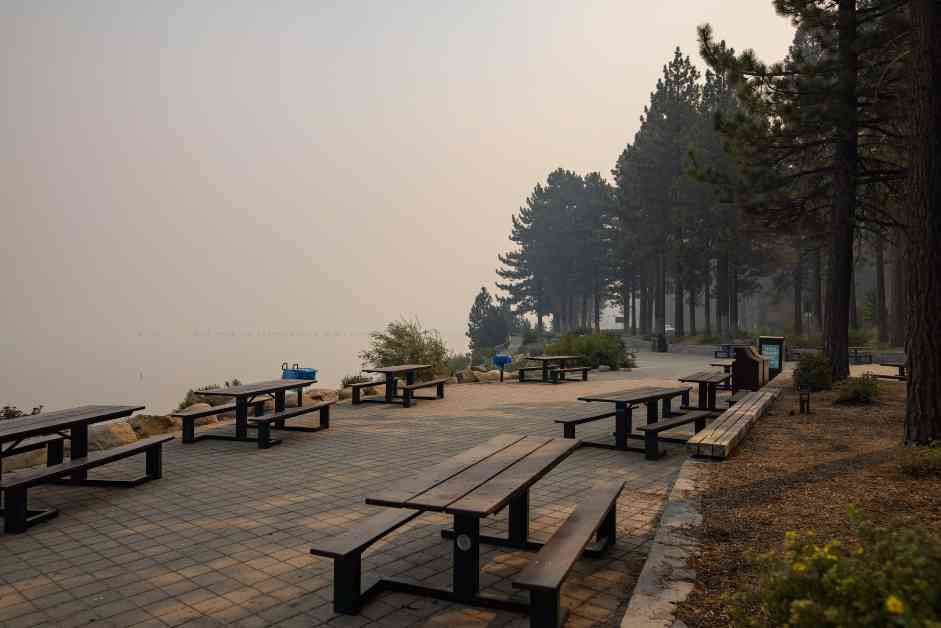On a recent June red flag day, I hiked high in the Mount Charleston Wilderness and looked down on the nearly invisible Las Vegas Valley blanketed with smog from Arizona and California fires, grateful to be above it, but worried about those in the city forced to breathe the toxic air. The buildup of grasses from a relatively wet winter and punishing early heat portend another heavy fire season this year. And there’s no end in sight. Increasing smoke-filled days are a major harbinger of our climate-altered future, a demonstrative reminder that Nevada needs to reorient many of our public policies to build resilience and create communities adapted to climate impacts.
Climate change-fueled heat and drought, combined with invasive species, past fire suppression and increased human habitation in previously wild areas are sparking an ongoing crisis of summer and year-round fire risk that will continue for decades. Western wildfires burn six times the acreage of 45 years ago, more than 27 million acres just in the past three summers. The number of wildfires is projected to rise 50 percent more by the end of the century.
The biggest wildfire health risk to Nevadans is from smoke exposure. According to the American Lung Association, Reno and Carson City rank among the nation’s worst cities for wildfire smoke pollution. About 1 in 300 deaths in Western states are directly attributable to particle pollution from smoke, and wildfire-attributable mortality is projected to more than double by 2050.
Wildfire smoke increases emergency room visits for asthma, heart attacks and stroke. It’s correlated with lung cancer and other cancers, adverse pregnancy outcomes such as preterm birth and low birth weight, and death from COVID-19. Direct fire exposure or prolonged smoke in an area disrupt work and daily life for many people, and exposure to wildfire is associated with prolonged mental health impacts.
Health facilities themselves may need to evacuate and suspend services, as occurred in South Lake Tahoe during the 2021 Caldor Fire. And the health risks fall disproportionately on firefighters and vulnerable populations, including children, outdoor workers, people with pre-existing health conditions and those lacking reliable housing or air conditioning. Building wildfire resilience is a health and human rights imperative.
Fortunately, new research points us toward policies that will help mitigate wildfire risks to property, environment and health. We now need to focus more on implementing resilience planning and action across the government and private sector. A federal Wildland Fire Mitigation and Management Commission set up with funding from the Bipartisan Infrastructure Act has promulgated a detailed series of recommendations for recovery and prevention. For example, policies that combine prescribed burning with adequate public health response capacity can limit smoke exposure and health harms.
Nevada’s senators have shown that they understand the need for a broad government response, helping to secure federal funding for wildfire resilience and supporting better pay for wildland firefighters. In the House, there was Nevada support for a bipartisan bill increasing technical assistance to maintain healthy forests on private land. But more needs to be done to aid recovery from fires. For example, studies show a need for more native seeds and seedlings for replanting. The bipartisan Seedlings for Sustainable Habitat Restoration Act ensures capital for seedling supplies for critical reforestation efforts, something our congressional delegation should get behind.
Building fire-adapted communities, including those with defensible space, resilient structures and well thought-out evacuation plans can save lives and property. The Nevada Division of Forestry’s Fire Adapted Nevada Partnership provides support for undertaking such plans. Our state and municipal climate action plans should consider strategies to increase resilience alongside the important task of greenhouse gas reduction.
This summer we all need to create personal wildfire resilience. Nevadans living in fire-prone areas should have an emergency plan for their family and pets in case they need to evacuate. Everyone should become familiar with safety measures during smoky days, including knowing how to check local air quality, using air conditioning or a DIY box fan and using National Institute for Occupational Safety and Health-approved masks if vulnerable or spending time outdoors.
Most importantly, we must hold our elected leaders accountable for supporting expertise, research and consistent action to build resilient and climate-adapted communities. As the 2024 elections approach, we can ask candidates how they will manage climate impacts like wildfire and vote for those who show knowledge and concern for keeping us safe and healthy.
Joanne Leovy is a family physician and chair of Nevada Clinicians for Climate Action.
The Nevada Independent welcomes informed, cogent rebuttals to opinion pieces such as this. Send them to [email protected].
In addition to the challenges posed by wildfires in Nevada, it is crucial to consider the impact of climate change on other aspects of the environment and public health. For instance, rising temperatures can lead to more frequent heatwaves, posing a risk to vulnerable populations such as the elderly and young children. Additionally, changes in precipitation patterns can impact water availability and agricultural productivity.
Efforts to address climate change and its associated risks require a multi-faceted approach that involves policymakers, community members, and other stakeholders. By implementing sustainable practices, investing in renewable energy sources, and promoting resilience-building initiatives, Nevada can work towards mitigating the effects of climate change and safeguarding the well-being of its residents.
Furthermore, education and awareness-raising campaigns can help individuals understand the importance of reducing their carbon footprint and adopting environmentally-friendly behaviors. By fostering a culture of sustainability and resilience, Nevada can take significant strides towards creating a more secure and healthy future for all.



